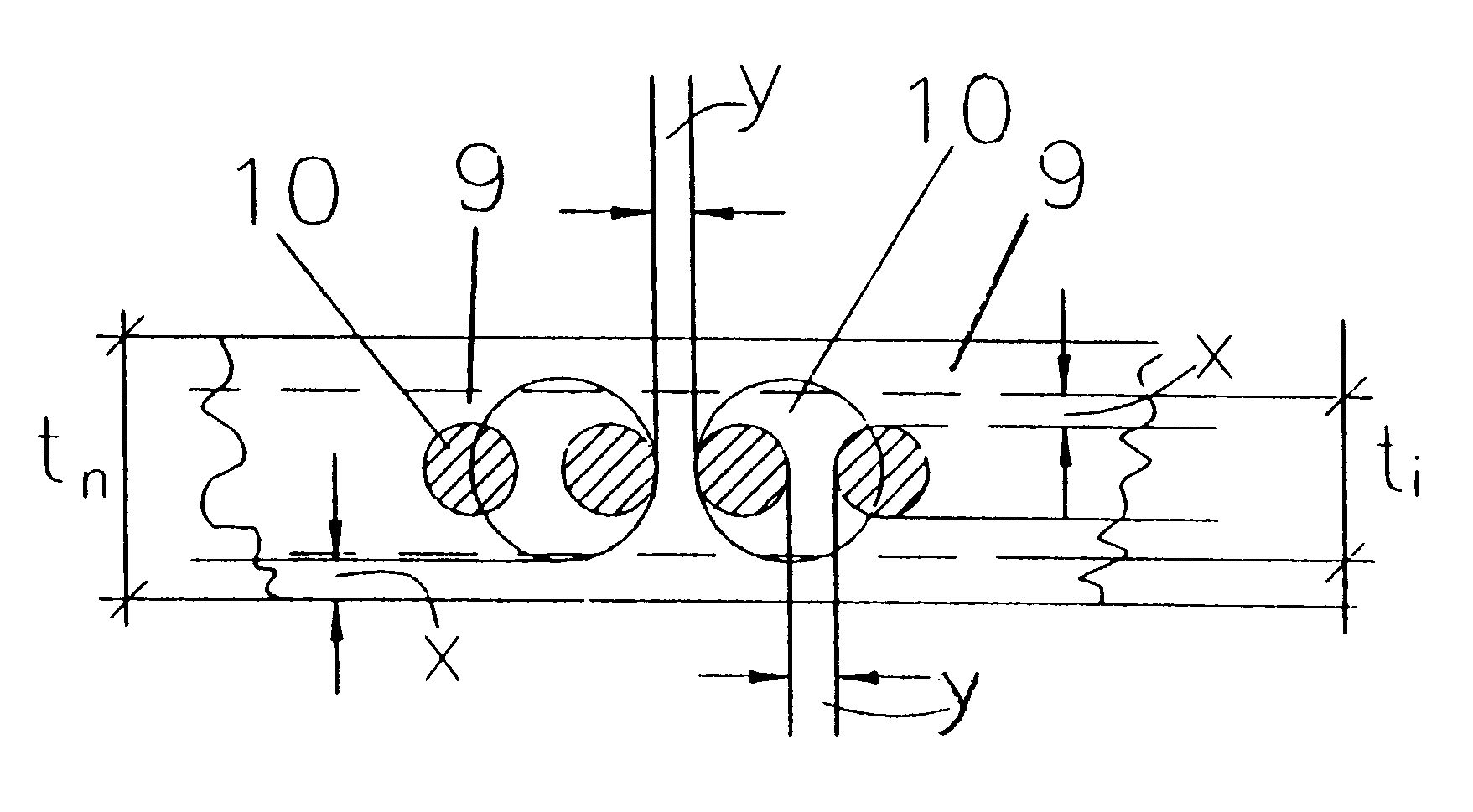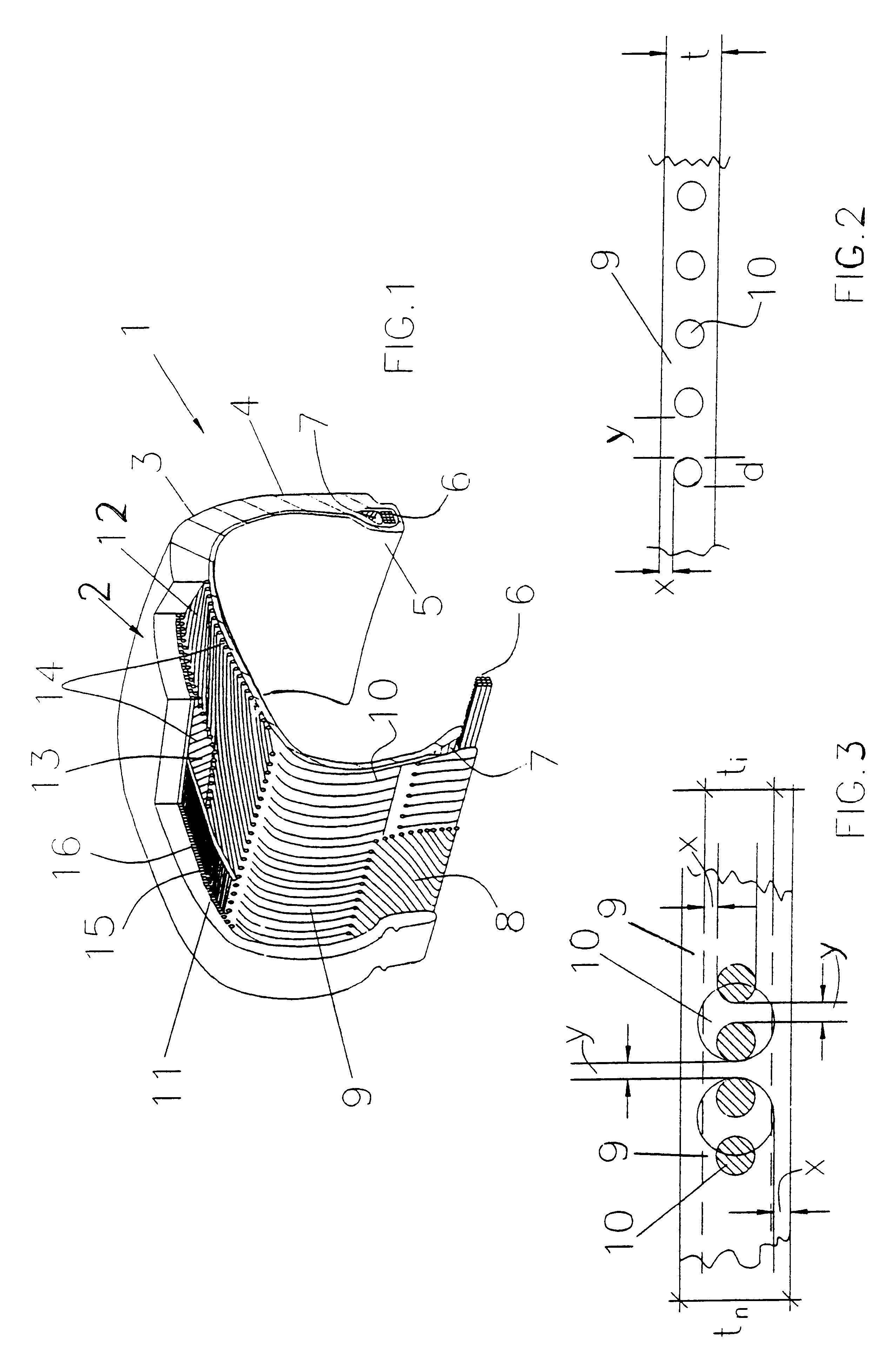Reinforcing fabric for an article made from elastomeric material and corresponding article comprising this fabric
a technology of elastomeric material and reinforced fabric, which is applied in the direction of weaving, other domestic articles, transportation and packaging, etc., can solve the problems of inability to achieve adequate rubberizing of the cord, reduce the quantity of rubber, and avoid the risk of compromising the mechanical strength of the tire and/or its quality. , to achieve the effect of reducing the weight of the article and reducing the quantity of rubber
- Summary
- Abstract
- Description
- Claims
- Application Information
AI Technical Summary
Benefits of technology
Problems solved by technology
Method used
Image
Examples
example 2
In a second embodiment, the casing fabric 9 is made with cords of the same material (PEN) and of the same diameter, and with the same elastomeric composition as those of the preceding example, but with a decrease of the cord density as compared with the fabric of Example 1, and consequently of the percentage by volume of the strong material in the fabric, as shown in Table 2, giving the results shown therein.
example 3
In a third embodiment, the casing fabric 9 is made with cords of the same material (PEN) and of the same diameter, and with the same elastomeric composition as those of the preceding example, but with a cord density and consequently a percentage by volume of the strong material, having values intermediate between those cited previously, as shown in Table 3 below, giving the results shown therein.
In the preceding examples, the composition of the fabric rubberizing compound is not specified, since it has no effect for the purposes of the present invention. In any case, the rubberizing compound is always the same in all the cited examples of embodiments and in the control fabric which will be described subsequently.
Further embodiments of the invention may comprise rubberized fabrics reinforced with cords of aramid and other textile materials, such as polyethylene terephthalate, known by the abbreviation PET, polyvinyl alcohol, known by the abbreviation PVA, and similar.
The cords may ha...
PUM
| Property | Measurement | Unit |
|---|---|---|
| diameter | aaaaa | aaaaa |
| diameter | aaaaa | aaaaa |
| thickness | aaaaa | aaaaa |
Abstract
Description
Claims
Application Information
 Login to View More
Login to View More - R&D
- Intellectual Property
- Life Sciences
- Materials
- Tech Scout
- Unparalleled Data Quality
- Higher Quality Content
- 60% Fewer Hallucinations
Browse by: Latest US Patents, China's latest patents, Technical Efficacy Thesaurus, Application Domain, Technology Topic, Popular Technical Reports.
© 2025 PatSnap. All rights reserved.Legal|Privacy policy|Modern Slavery Act Transparency Statement|Sitemap|About US| Contact US: help@patsnap.com


